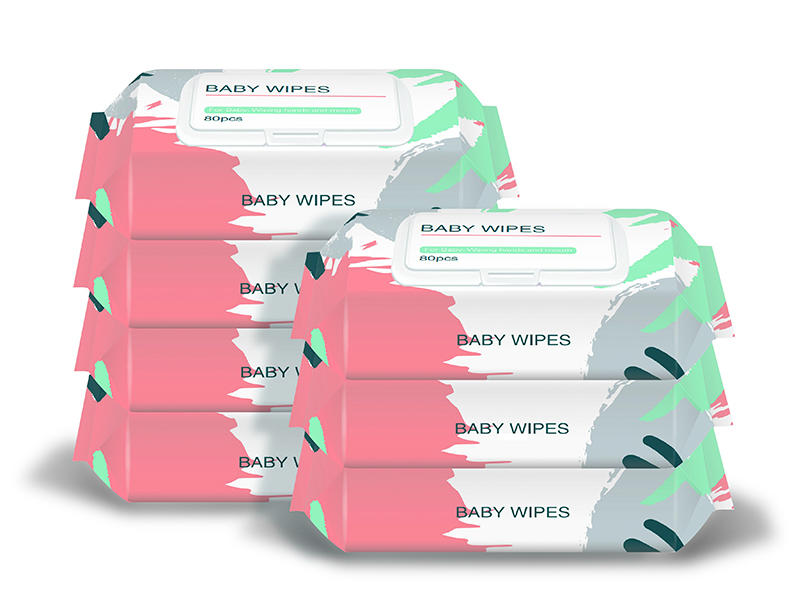The global hygiene industry is undergoing a significant transformation as consumers and regulators push for more sustainable alternatives to traditional disposable products. Among these innovations, viscose/pulp flushable fabric for toilet paper has emerged as a promising solution, combining biodegradability with the convenience of flushability. Unlike conventional wet wipes, which often contain plastic fibers and contribute to sewage blockages and environmental pollution, this material leverages natural fibers to provide a safer, more eco-friendly option. But can it truly meet performance expectations while addressing environmental concerns?
Why Are Consumers Shifting Toward Flushable Hygiene Products?
The demand for flushable fabrics has surged in recent years, driven by growing awareness of plastic pollution and stricter regulations on single-use plastics. Traditional wet wipes, even those labeled as “flushable,” often contain synthetic fibers like polyester or polypropylene, which do not break down easily in water. These materials contribute to fatbergs—massive blockages in sewer systems—costing municipalities millions in cleanup efforts.
In contrast, viscose/pulp-based flushable fabric is designed to disintegrate rapidly in water, reducing the risk of plumbing issues. Viscose, a regenerated cellulose fiber derived from wood pulp, offers a soft, cloth-like texture while maintaining high absorbency. When blended with wood pulp, the resulting material achieves a balance between durability and dispersibility, making it suitable for toilet paper and other flushable hygiene products.
Consumer preferences are also shifting due to:
- Environmental concerns – Increased scrutiny of microplastics and non-biodegradable waste.
- Convenience – The desire for disposable yet sewer-safe products.
- Regulatory pressures – Bans on plastic-containing wipes in some regions.
As a result, manufacturers are investing in flushable nonwoven fabrics that comply with industry standards such as INDA/EDANA’s flushability guidelines, ensuring they break down adequately in wastewater systems.
How Does Viscose/Pulp Flushable Fabric Compare to Conventional Options?
To understand the value of viscose/pulp flushable fabric, it’s essential to compare it with conventional alternatives like standard wet wipes, cotton-based products, and synthetic nonwovens. The key differentiators lie in material composition, environmental impact, and functional performance.
Material Composition
| Property | Viscose/Pulp Flushable Fabric | Traditional Wet Wipes (Plastic-Based) |
|---|---|---|
| Primary Material | Wood pulp + viscose (cellulose) | Polyester/polypropylene (plastic) |
| Biodegradability | High (breaks down in water/soil) | Low (persists as microplastics) |
| Flushability | Designed to disperse quickly | Often causes blockages |
| Softness & Absorbency | Comparable to traditional wipes | High, but environmentally harmful |
Environmental Impact
Unlike synthetic wipes, viscose/pulp flushable fabric decomposes naturally, minimizing long-term ecological harm. Studies show that cellulose-based materials degrade significantly faster in wastewater treatment plants, reducing the burden on sewage infrastructure. However, proper labeling and consumer education are crucial—products must be certified as truly flushable to prevent misuse.
Performance Considerations
While flushable nonwoven fabrics excel in sustainability, they must also meet practical demands:
- Strength when wet – Should not tear prematurely during use.
- Rapid disintegration – Must break apart within a short time in moving water.
- Softness & comfort – Essential for consumer acceptance.
Advancements in hydroentanglement technology (a bonding method using high-pressure water jets) have improved the durability of these fabrics without compromising flushability.
Challenges and Innovations in Flushable Fabric Technology
Despite its benefits, viscose/pulp flushable fabric faces several challenges that must be addressed for widespread adoption.
1. Misconceptions About Flushability
Many products marketed as “flushable” have faced criticism for failing to disintegrate adequately. To combat this, manufacturers must adhere to strict testing protocols, such as:
- Slosh box tests (simulating toilet flushing).
- Municipal pump tests (assessing breakdown in real sewage conditions).
2. Balancing Durability and Dispersibility
A common trade-off in flushable nonwovens is ensuring the fabric remains intact during use but breaks down quickly afterward. Innovations in short-fiber cellulose blends and optimized bonding techniques are helping overcome this hurdle.
3. Competing with Cost-Effective Synthetics
While plastic-based wipes are cheaper to produce, the long-term environmental costs are shifting the market. Governments imposing plastic taxes and extended producer responsibility (EPR) laws may further incentivize sustainable alternatives.
The Future of Flushable Fabrics: Trends and Market Potential
The hygiene and personal care industry is poised for continued growth in eco-friendly disposable products, with viscose/pulp flushable fabric playing a central role. Key trends shaping its future include:
1. Expansion Beyond Toilet Paper
While initially popular in flushable wipes, this material is finding applications in:
- Feminine hygiene products
- Medical and cleaning wipes
- Eco-friendly packaging liners
2. Regulatory Push for Plastic-Free Solutions
The EU’s Single-Use Plastics Directive and similar policies worldwide are accelerating the shift toward biodegradable alternatives. Companies investing in certified flushable fabrics will likely gain a competitive edge.
3. Consumer Education and Brand Responsibility
Clear labeling and public awareness campaigns are essential to prevent improper disposal. Industry collaborations, such as the “Fine to Flush” certification in the UK, set benchmarks for product reliability.


 中文简体
中文简体 English
English Беларуская
Беларуская 한국어
한국어 Français
Français 日本語
日本語 русский
русский Español
Español












